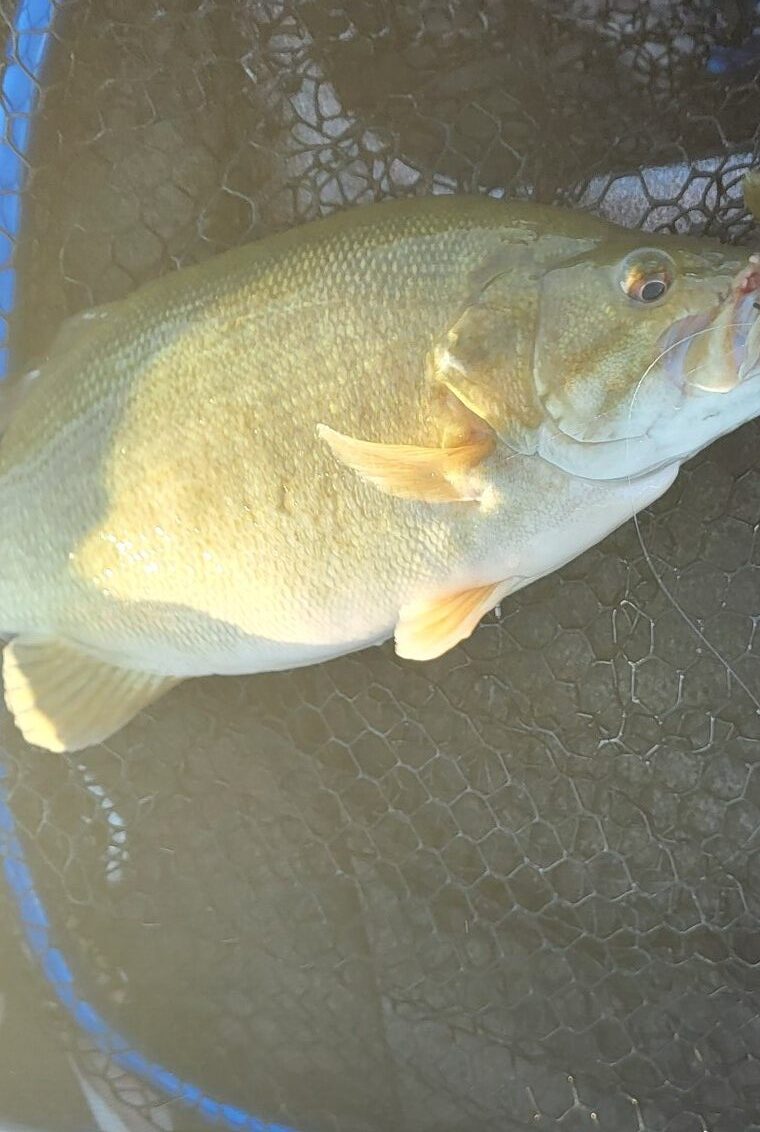For anglers seeking to elevate their game, understanding the best barometric pressure for bass fishing can be a game-changer. We have all experienced bass feeding and not feeding during weather events. What causes this? And does barometric pressure have anything to do with it? That’s what we get to the bottom of in this article.
Summary Table of Barometric Pressure for Bass Fishing
| Barometric Pressure | Pressure Trend | Fishing Conditions | Best Tactics |
|---|---|---|---|
| High (30.5+ inHg) | Stable or Rising | Fish are less active, may stay deep | Fish slow, use finesse lures and live bait |
| Normal (29.8 – 30.4 inHg) | Steady | Good fishing conditions, fish moderately active | Use a mix of live bait and artificial lures |
| Falling (29.7 – 29.5 inHg) | Decreasing | Fish become more active, feeding aggressively | Use fast-moving lures, crankbaits, and jigs |
| Low (29.5 or lower inHg) | Rapidly Falling | Excellent fishing, fish are highly active | Use aggressive presentations, topwater lures |
| Very Low (Below 29.5 inHg) | Steady Low | Fish may slow down, but stormy weather could help | Fish near cover, use large, flashy baits |
What is Barometric Pressure?
Barometric pressure, also known as atmospheric pressure, is the force exerted by the weight of the atmosphere on the Earth’s surface. It’s a key component of weather systems and can greatly influence fish behavior. Here are some key points to understand:
- Barometric pressure is typically measured in inches of mercury (inHg) or millibars (mb)
- Normal sea-level pressure is around 29.92 inHg or 1013.25 mb
- Pressure changes can be rapid or gradual, depending on weather patterns
Understanding these basics is the first step in leveraging barometric pressure for better bass fishing.
The Science Behind Barometric Pressure and Bass Behavior
Bass, like many fish species, have evolved to be highly sensitive to changes in their environment. Their ability to detect barometric pressure changes gives them a survival advantage. Here’s how it works:
- Swim bladder sensitivity: Bass have an organ called a swim bladder that helps them maintain buoyancy. This organ is also sensitive to pressure changes.
- Comfort zones: Rapid pressure changes can cause discomfort for bass, influencing their behavior and feeding patterns.
- Feeding triggers: Certain pressure conditions can trigger feeding frenzies as bass anticipate weather changes that might affect their food sources.
As professional angler, Kevin VanDam notes, “Understanding how barometric pressure affects bass is like having a secret weapon in your tackle box.”
Ideal Best Barometric Pressure for Bass Fishing
While there’s no one-size-fits-all answer to the best barometric pressure for bass fishing, certain ranges tend to be more productive:
- 29.60 to 30.50 inHg: This range is often considered ideal for bass fishing
- Falling pressure: Bass often feed aggressively as pressure drops before a storm
- Stable pressure: Consistent pressure can lead to predictable feeding patterns
Remember, these are general guidelines. Local conditions and seasonal factors can influence the optimal pressure for your specific fishing spot.
Best Times to Fish Based on Barometric Pressure
Timing your fishing trips around barometric pressure can significantly improve your chances of success. Consider these scenarios:
- Pre-frontal conditions: As the pressure begins to fall before a storm, the bass often feed aggressively. This can be one of the best times to fish.
- Post-frontal scenarios: After a front passes and pressure starts to rise, fishing can be challenging. Bass may move to deeper water or become less active.
- Stable high-pressure periods: While not ideal, stable high-pressure can lead to consistent fishing if you adapt your techniques.
Fishing During Falling Barometric Pressure
Falling pressure often creates prime conditions for bass fishing. Here’s how to make the most of it:
- Target shallow areas where bass may be actively feeding
- Use faster, more aggressive retrieves to trigger reaction strikes
- Try topwater lures or crankbaits to cover water quickly
- Focus on areas near drop-offs where bass can quickly retreat to deeper water
As the pressure drops, bass may feed more aggressively to prepare for the coming weather change. This window of opportunity can produce some of the most exciting fishing action.
Fishing During Rising Barometric Pressure
Rising pressure can present challenges, but knowing how to adapt can still lead to success:
- Fish deeper water where bass may retreat as pressure increases
- Slow down your presentations and use finesse techniques
- Try soft plastics or jigs worked slowly along the bottom
- Focus on structure and cover where the bass may be holding tight
While rising pressure can make fishing tougher, it’s not impossible. Patience and persistence are key during these conditions.
Adapting Your Fishing Techniques to Barometric Pressure
To maximize your success, adjust your fishing approach based on the current pressure conditions. While using what you have learned in this article you can use it on your home lake.
Tools and Apps for Tracking Barometric Pressure
Modern technology has made it easier than ever to monitor barometric pressure. Some useful tools include:
- Portable weather stations
- Smartphone apps like WeatherBug or AccuWeather
- Fishing-specific apps that include barometric pressure data
Investing in these tools can help you make more informed decisions about when and where to fish.
Using the information in this article, you will be able to better understand what barometric pressure is best for bass fishing. This isn’t a full proof way to tell, but it is a piece to the puzzle.

